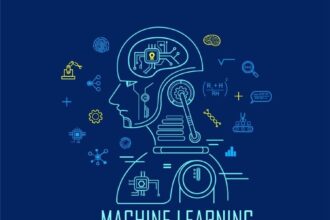We have talked about the impact that machine learning has had on website and app development. However, machine learning technology can also help solve Internet problems on a more granular level.
A growing number of people have complained about WiFI dead zones. Fortunately, machine learning technology shows some promise in addressing them. One of the benefits of machine learning is that it can help improve mesh networks, which can minimize the risk of Internet connectivity problems.
Machine Learning Can Help Create Better Mesh Networks to Resolve Dead Zone Problems
Pandemic conditions have forced many to work and study from home, making us scramble to set up our workspaces. With 22% of the American workforce expected to go remote by 2025, it’s criminal not to have reliable and consistent WiFi in every corner of the house by now.
When all family members are connected to the same network and all their devices share the same bandwidth, it can be hard to get a good connection in every room. Unfortunately, we all know too well what it’s like when you walk into another room only for your laptop or phone’s WiFi signal to drop out altogether.
WiFi dead zones have been a source of frustration for many households. Therefore, it is encouraging to see a growing number of network administrators solving these problems with machine learning, which helps create better mesh networks..
In order to appreciate the benefits of using machine learning to address these problems, it is necessary to first appreciate the issues caused by dead zones and how they emerge in the first place. Dead zones usually manifest in areas of the house far away from the router or when there is interference from other WiFi networks. Large metal objects such as filing cabinets, microwaves, and other appliances can also be a factor.
Some common workarounds include repositioning the router or installing range extenders or signal boosters – but the cable management and configuration process can be a hassle. Sometimes, replacing the router is best.
That’s where mesh networks come in. A mesh network is a system of interconnected routers and devices that creates a single wireless connection that allows for an uninterrupted flow of data to any device on the network. These networks can be even more effective when they are optimized with machine learning.
What Are Mesh Networks And How Can Machine Learning Assist With Improving Them?
Think of a mesh network as the veins and arteries of your home. There is a primary router, which is connected to an internet modem and broadcasts a signal throughout the house. Additional routers, or nodes, are placed in strategic locations around the house to ensure every corner has access to strong WiFi signals.
Mesh WiFi systems provide several advantages over traditional methods of boosting your internet signal. For starters, they’re typically bundled with one or two range extenders, so you don’t have to worry about buying additional hardware.
They also allow seamless roaming throughout your home or office space – as long as you remain connected to the same network name (SSID), you won’t experience any dropouts or lag when moving from one room to another.
Finally, mesh networks are incredibly scalable. If your home or office expands over time, you can always add more nodes to ensure everyone can access a strong WiFi signal.
As useful as mesh networks can be, they are even more effective when optimized with machine learning. Samurdhi Karunaratne and Haris Gacanin are a couple of Belgium researchers that wrote a paper on the topic, which was published by Cornel University’s ARXIV. They report that the biggest advantages of using machine learning to administer mesh networks are Q-learning, automated learning, routing and artificial neural networks.
In all of these applications, machine learning allows networks to be better managed with rule-based mechanism using certain metrics or physical parameters. They can better understand various constraints, which help make the network more efficient. They can also use perceptrons, which are supervised learning algorithms for binary classification to monitor and deter malicious route floods.
What Are Some of the Best Mesh Networks that Use Machine Learning to Address Dead Zones?
Take the NETGEAR Orbi RBK862S. Its initial kit includes a router and one satellite, with an overall coverage of 5,400 square feet and a maximum wireless speed of up to 6 Gbps. You can also add additional satellites to extend the coverage area. The product’s tri-band mesh technology is widely lauded as one of the fastest and widest, so each time you add a satellite, the coverage extends by an additional 2,700 square feet.
Overall, mesh networks are an effective and reliable way to eliminate dead zones from your home or office space. They provide a seamless and secure connection throughout the house, so you can work or study without any interruptions.
Machine Learning Helps Improve Mesh Networks to Deal with Dead Zones
A growing number of people are expressing concerns about the proliferation of dead zones, as they work from home more regularly. The good news is that advances in AI technology can help address them. If you’re looking for an easy way to improve your WiFi coverage, then a mesh network like NETGEAR’S may be a more cost-effective solution that uses machine learning to improve connectivity.











